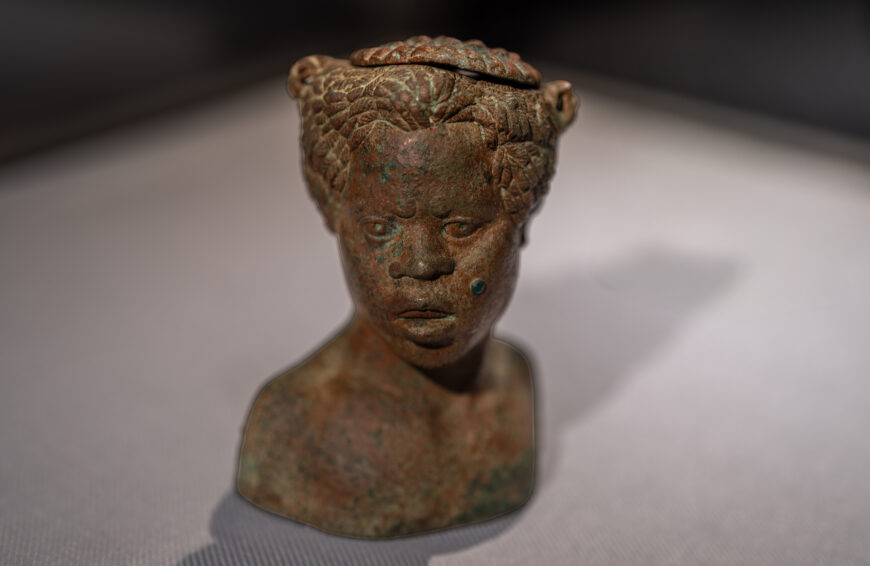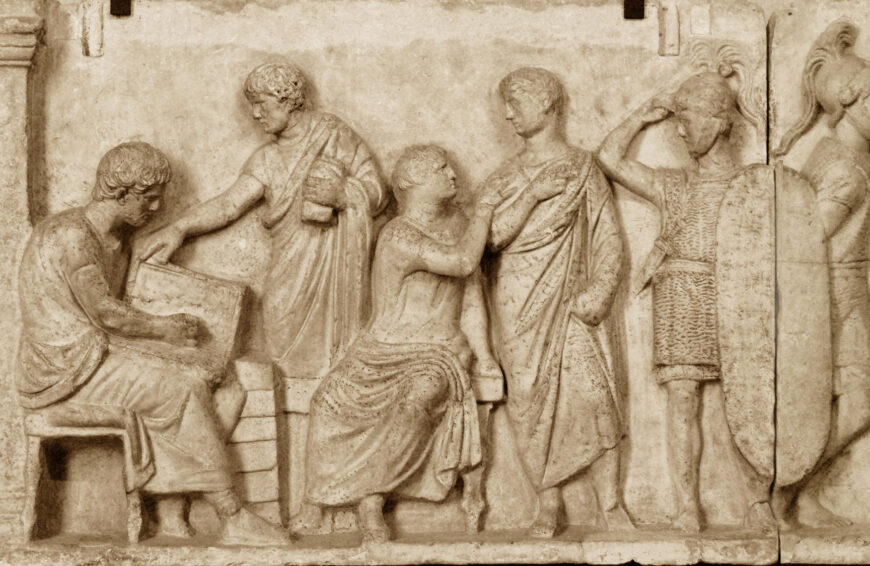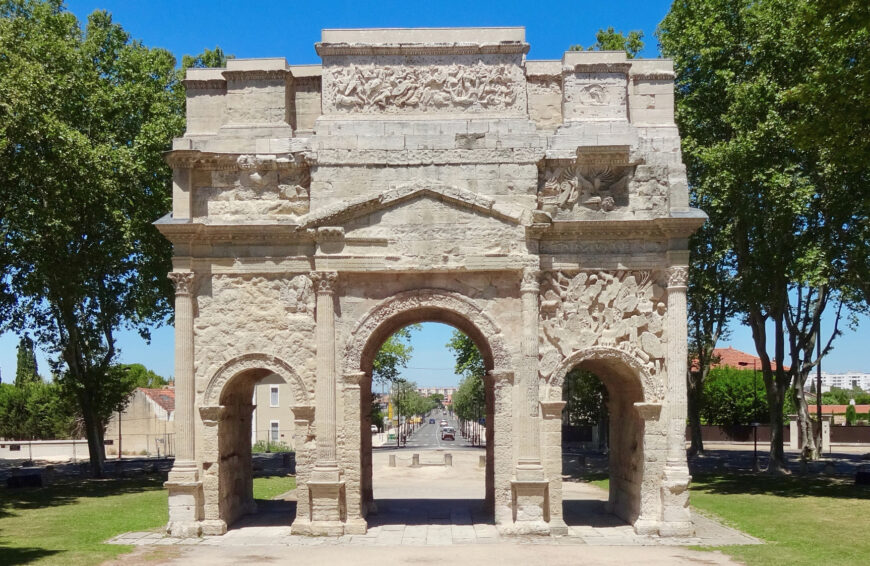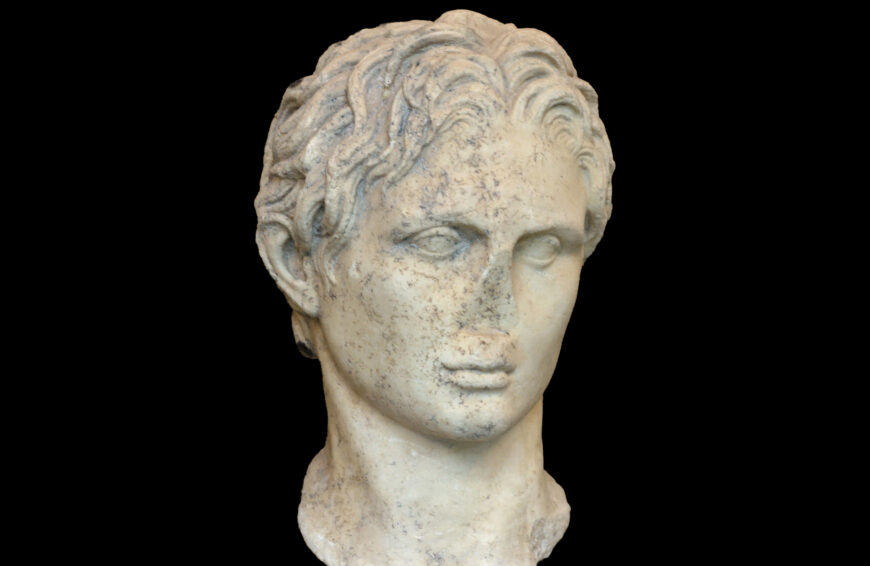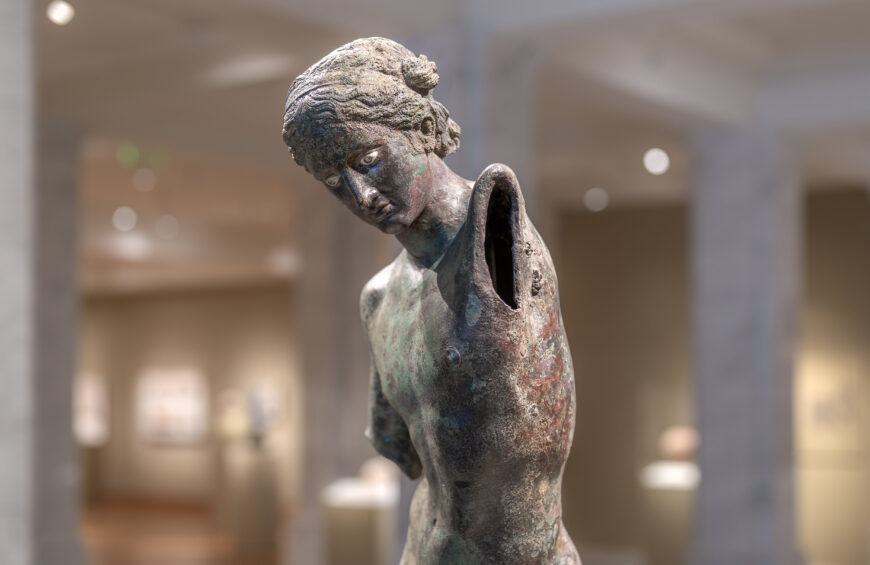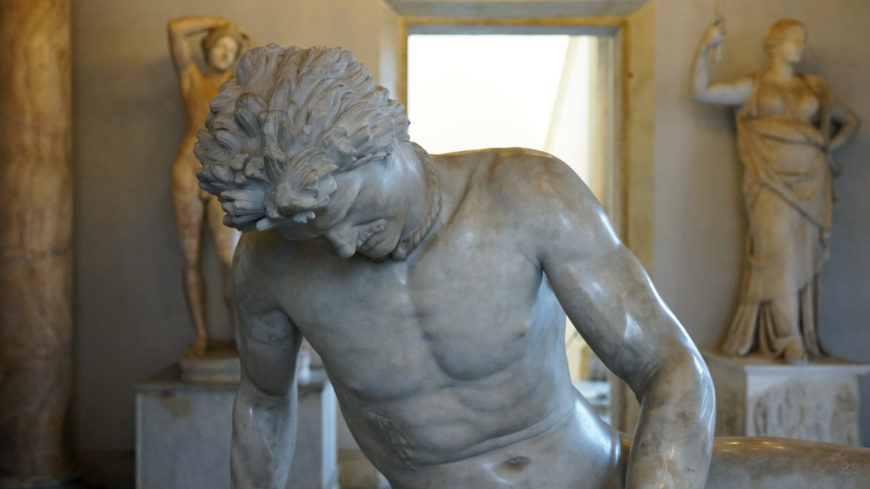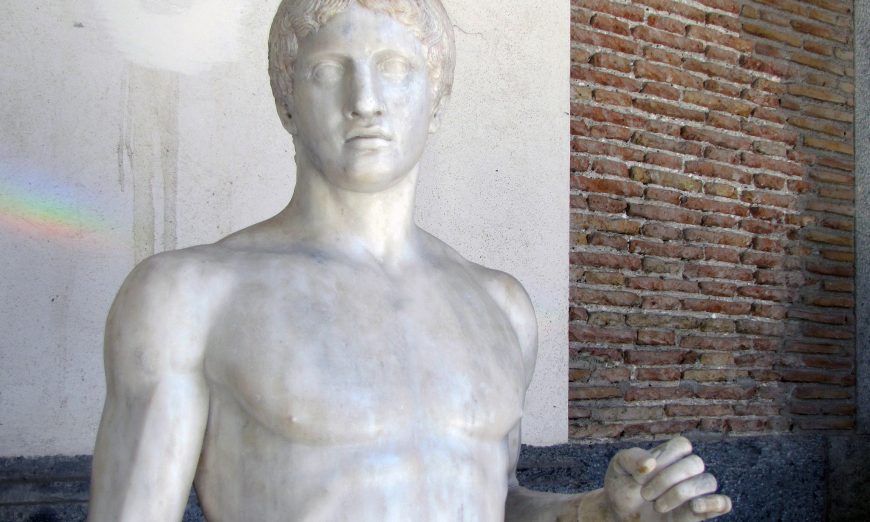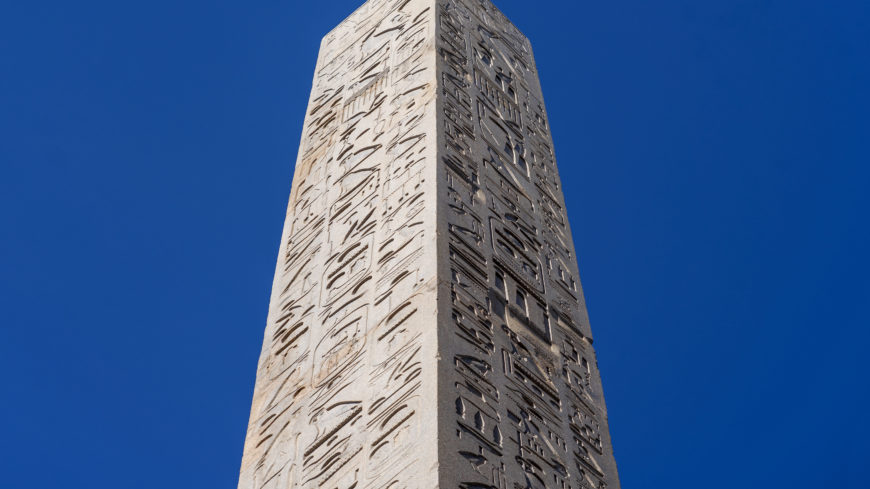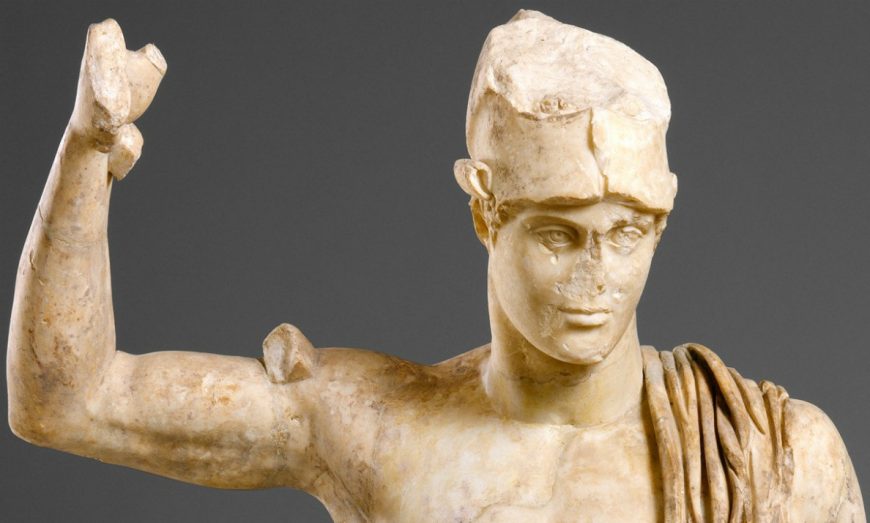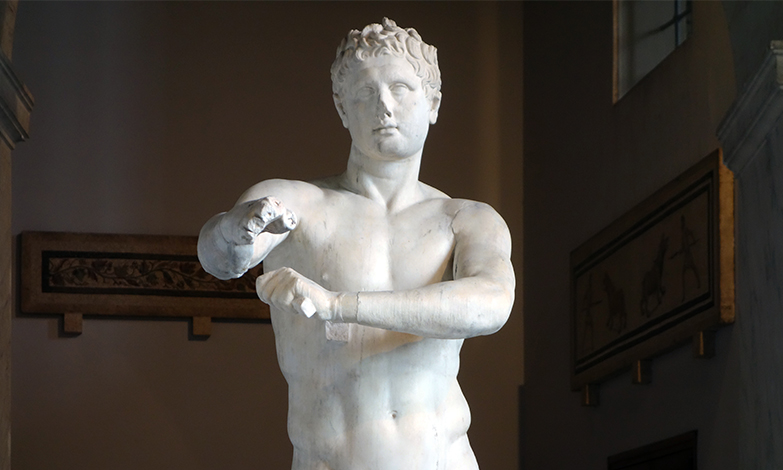Two marble portrait busts, 2nd century C.E., found during an excavation in 1949, Lullingstone Roman Villa, Kent (British Museum, on loan from Kent County Council). Speakers: Dr. Elizabeth Marlowe and Dr. Steven Zucker
The importance of the archaeological findspot: The Lullingstone Busts
[0:00] [music]
Dr. Steven Zucker: [0:04] When we’re lucky enough to have an ancient object that was excavated by trained archaeologists, we have so much more information than we would otherwise have.
Dr. Elizabeth Marlowe: [0:14] A perfect example of this is a pair of portraits that are today in the British Museum.
Dr. Zucker: [0:19] They’re not in great condition.
Dr. Marlowe: [0:20] Getting excited about these works requires us to give up our expectations of ancient portraiture, that it has to be beautiful, and smooth, and white. We have to learn to look past the breaks to appreciate everything these can tell us.
Dr. Zucker: [0:34] If we have that patience, we are richly rewarded.
Dr. Marlowe: [0:37] Let’s just imagine for a moment that these portraits didn’t come from a well-documented archaeological excavation, but rather that they surfaced on the art market. That’s where the vast majority of the Roman sculpture first becomes known to the public, is when it’s in a dealer’s hands or in a private collection already. What would we be able to say about this?
Dr. Zucker: [0:57] We’d have as evidence only the object itself.
Dr. Marlowe: [1:01] There’s a lot to build on there. This is a beautifully carved work of Greek Pentelic marble. The sculptor used a range of tools, a drill, a chisel. He modeled the surface of the stone with tremendous skill.
Dr. Zucker: [1:15] The other thing that we would have been able to do if we didn’t have a findspot was to compare it to other existing sculptures. There is, in fact, another portrait that looks very similar.
Dr. Marlowe: [1:25] We can compare these portraits to coin images of a man named Pertinax, who was the emperor of Rome and who had been governor of Britain.
Dr. Zucker: [1:35] In fact, we have the findspot. The findspot was in a villa not outside of Rome, but outside of what was then Londinium in the Roman province of Britannia, what we now call England.
Dr. Marlowe: [1:46] Already, just knowing that tells us a tremendous amount. It tells us that it was in somebody’s interest to bring this all the way from Greece, where it would have been originally carved, up to Britain, a remote northern province of the Roman Empire.
[2:03] Public portraits would have been set up not only in places that we think of as public, but they also would have been set up in important officials’ homes.
Dr. Zucker: [2:12] What do we know about the villa itself?
Dr. Marlowe: [2:14] The archaeology of the villa suggests that it was right around the period when this portrait was made that this villa was expanded and spruced up in very Roman ways. A bath complex was added, walls were repainted with Roman-style imagery. A very high-status finger ring carved in a semi-precious stone was found on the site.
Dr. Zucker: [2:37] Having marble portrait busts was very much a part of this Romanization.
Dr. Marlowe: [2:41] People coming to the villa would have seen all of this Roman visual culture and understood that whoever was living in this villa was someone with close ties to Roman imperial authority.
Dr. Zucker: [2:53] Britain was the outskirts, and so one can imagine how important it would be to reflect Roman culture.
Dr. Marlowe: [2:59] It’s very tempting to imagine that this villa was a country estate of Pertinax when he was the governor of Britain.
Dr. Zucker: [3:08] It would not be unusual to imagine that the governor would have brought an image of himself from the Mediterranean world as an expression of his power, of his prestige.
Dr. Marlowe: [3:18] We have to remember that this was set up in the house together with the image of what is probably a relative of his. The two portraits were probably set up in the public atrium of the house or some public reception room, where they would have been seen by people coming to the villa to conduct official business.
Dr. Zucker: [3:35] But it’s also possible that the portraits date to his imperial period, perhaps in recognition that he had once lived here as governor.
Dr. Marlowe: [3:42] Already we can see the ways in which the presence of these portraits in this villa gives us a lot of information we would not have otherwise had about the villa itself. What’s really exciting about these portraits is they weren’t found in a large public space of the villa.
[4:00] They were found in what seems to be a kind of cult room in the basement of the house, with bowls installed in the ground in front of them, apparently, in order to receive libations, in order to receive votive offerings.
Dr. Zucker: [4:16] There are two explanations for this. One has to do with the fact that this emperor, after he was killed, was deified. That is, he was made into a god, and so offerings would be appropriate.
Dr. Marlowe: [4:26] Another possible explanation is that whoever the later owners of this villa were found these portraits and they respected them as part of [a] kind of house spirits, and so set them up in this honorific context in the basement. If we fast forward another hundred years, the archaeologists were able to see that this basement was renovated.
Dr. Zucker: [4:50] One of the earliest Christian house churches in all of Britain was built just immediately above, but these figures were not toppled, they were not buried. They continued to be venerated even as the Christian church above was used.
Dr. Marlowe: [5:02] We have to remember that for a very long time after the introduction of Christianity into the Roman Empire, traditional forms of worship continued side by side with these new Christian practices.
Dr. Zucker: [5:14] We have these two portrait busts. They’re not in great condition, but they still tell us an enormous amount about late Roman imperial history and early Christian history in Britain.
Dr. Marlowe: [5:25] Because these works have a findspot.
[5:27] [music]
| Title | The Lullingstone Busts |
| Artist(s) | Unrecorded artist |
| Dates | c. 2nd century C.E. |
| Places | Europe / Southern Europe / Greece / Western Europe / England |
| Period, Culture, Style | Ancient Roman / Middle Roman Empire |
| Artwork Type | Sculpture |
| Material | Marble |
| Technique | Carving |













